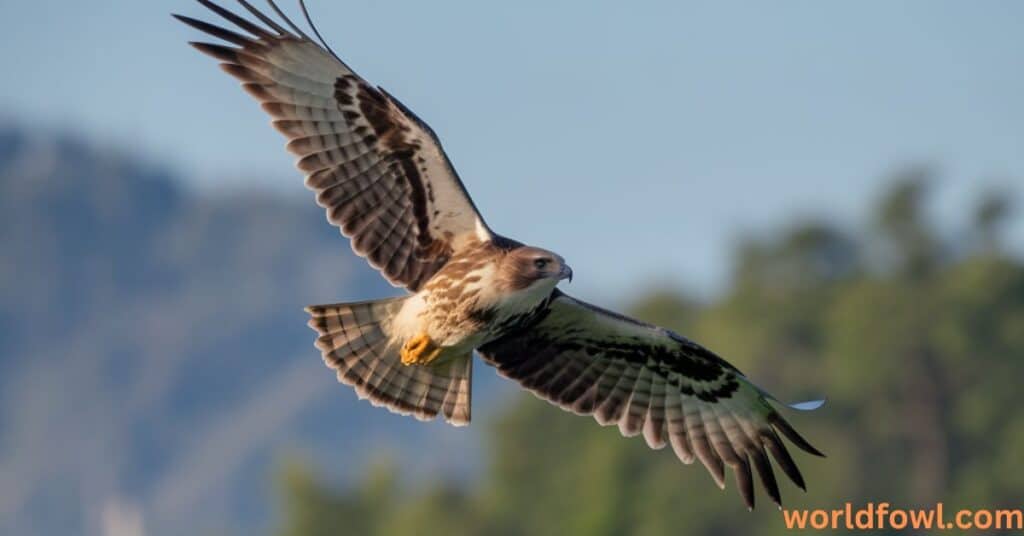Buzzards are often viewed as majestic birds, soaring high in the sky, circling over fields, forests, and hillsides. With their powerful talons, sharp beaks, and keen hunting instincts, it’s not hard to understand why many people have a certain level of respect — or fear — for these birds of prey. But the question remains: Do buzzards attack humans? Are these birds of prey dangerous to people, or is the fear surrounding them a product of myths and misconceptions?
In this comprehensive guide, we will dive into the world of buzzards, explore their behavior, and separate fact from fiction when it comes to their interactions with humans. We’ll look at the specific circumstances under which buzzards might display aggressive behavior, the role of urbanization in human-wildlife conflict, and much more. By the end, you’ll have a clear understanding of whether buzzards are a threat to humans or if the myth of buzzard attacks is largely overstated.
What Are Buzzards?
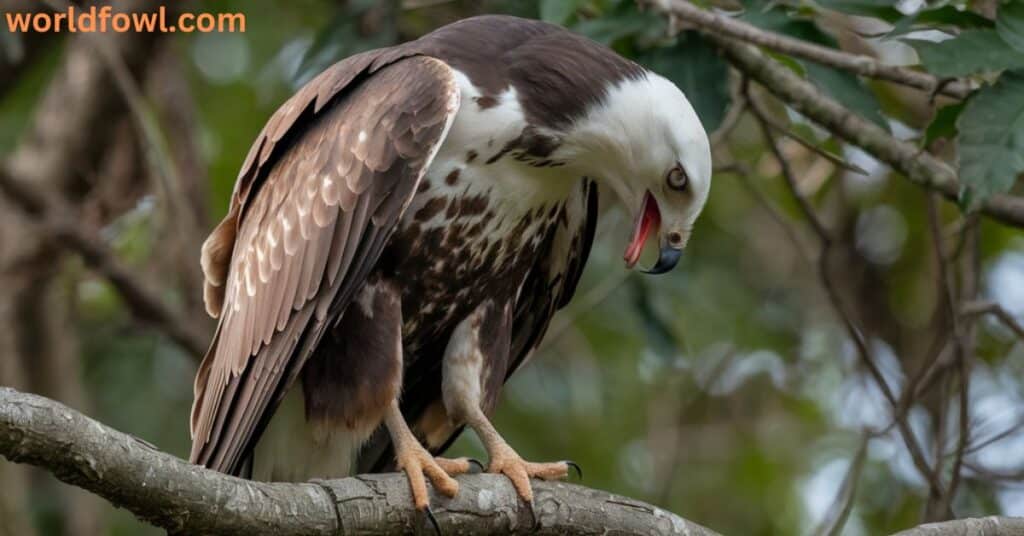
Before we answer the question of whether buzzards attack humans, it’s essential to first understand what buzzards are and how they behave. Buzzards are birds of prey, belonging to the genus Buteo, which includes several species found across Europe, North America, and parts of Asia. The most commonly known species in the UK, for instance, is the Common Buzzard (Buteo buteo), while in North America, the Red-tailed Hawk (Buteo jamaicensis) is often referred to as a buzzard, despite technically being a hawk.
Physical Characteristics of Buzzards
- Size: Buzzards are medium to large-sized raptors with wingspans ranging from 40 to 60 inches, depending on the species. They have a sturdy body with broad wings and a short, wide tail.
- Talons and Beak: Buzzards, like all birds of prey, possess sharp talons and hooked beaks that designed for catching, holding, and tearing apart their prey. Their powerful feet enable them to grip small mammals, birds, and even carrion effectively.
- Feathers and Plumage: Buzzards typically have dark feathers with a mix of browns, whites, and mottled patterns, which help them blend into their surroundings. Their predatory appearance allows them to camouflage when hunting or resting.
Habitat and Behavior
Buzzards are found in a wide variety of habitats, including forests, grasslands, and even urban areas. They are highly adaptable, and their behavior largely depends on their environment. In rural and forested areas, buzzards primarily hunt small mammals like rabbits and squirrels, while in urban areas, they may scavenge for carrion or feed on small animals found in nearby fields or parks. Unlike many other predators, buzzards tend to avoid human interaction unless they feel threatened.
Here’s a table summarizing the reasons why buzzards may attack or display aggressive behavior:
| Reason | Explanation |
|---|---|
| Nesting and Breeding Season | During the breeding season, buzzards become highly territorial and protective of their nests and young, leading to aggressive behavior if they feel threatened. |
| Defensive Behavior | Buzzards may swoop or dive-bomb humans or animals that enter their territory or get too close to their nests. |
| Human Proximity to Nesting Sites | If humans inadvertently approach a buzzard’s nest, particularly when chicks or eggs are present, the bird may act aggressively to defend its young. |
| Illness or Injury | A buzzard that is sick or injured may feel vulnerable and display more aggressive tendencies, including swooping or dive-bombing. |
| Stress from Habitat Encroachment | Urbanization and human encroachment on their natural habitats force buzzards into closer proximity to humans, potentially triggering defensive actions. |
| Protecting Food Sources | If buzzards feel threatened while scavenging or protecting carrion, they may display aggressive behavior to ward off intruders. |
This table helps break down the primary factors contributing to buzzard aggression, which mainly driven by protective instincts, territorial behavior, and external stressors.
See Also : Do Kiwi Birds Attack Humans?
Why Do Buzzards Attack?
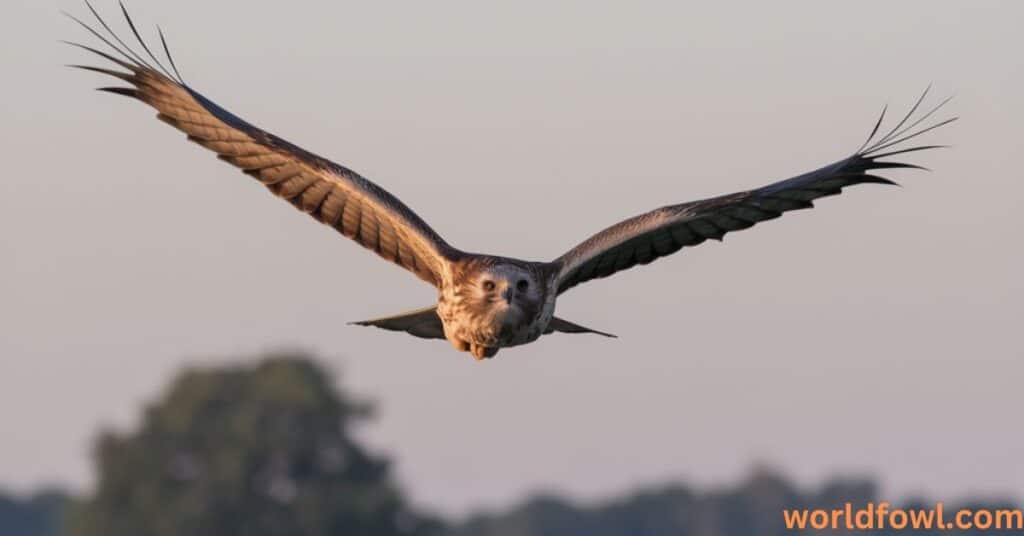
The idea that buzzards are constantly hunting for humans is simply not true. In fact, these birds of prey are much more likely to avoid people than to actively engage with them. However, there are specific circumstances in which buzzards may exhibit defensive behavior, which might lead to aggressive tendencies toward humans. Let’s break down why buzzards might attack and the factors that can trigger such behavior.
Nesting and Breeding Season
The breeding season is one of the key times when buzzards may display aggressive behavior. Like many animals, buzzards become incredibly protective when they are guarding their nests and young. If a human or animal inadvertently enters their territorial zone during this time, a buzzard may become defensive. Buzzards may feel threatened by the presence of an intruder and, in response, will engage in defensive swoops, dive-bombing, or circling their target to drive them away.
It’s important to note that buzzards are not actively hunting people during this time. Instead, they are simply protecting their offspring and ensuring the safety of their nesting site. These territorial behaviors are common in many species of birds of prey, including hawks and eagles.
Human Proximity to Buzzard Nesting Sites
One of the most common triggers for buzzard attacks is the human proximity to nesting sites. Buzzards, especially during the breeding season, are fiercely protective of their nests. If a human gets too close to a buzzard’s nest, particularly if there are chicks or eggs, the buzzard may react aggressively, often without warning. In this case, the bird may swoop down at the intruder to drive them away. However, these attacks are not life-threatening — they are often nothing more than warning gestures meant to encourage the intruder to leave the area.
Illness, Injury, or Stress
A buzzard that is sick, injured, or stressed may display more defensive behavior than a healthy, untroubled bird. When buzzards feel cornered or threatened due to injury or illness, they are more likely to resort to aggressive tendencies as a means of self-defense. This could lead to behaviors such as swooping at perceived threats or dive-bombing anyone who gets too close.
Urbanization and Habitat Encroachment
With increasing urbanization and human encroachment on natural habitats, buzzards and other wildlife increasingly forced into closer contact with people. As humans build homes, roads, and infrastructure, buzzard habitat shrinks, forcing these birds to adapt to urban areas. This can sometimes lead to human-wildlife conflict, particularly when buzzards are forced to scavenge for food in places where people live and work.
In cities and towns, buzzards may scavenge on roadkill or in garbage heaps, which brings them into closer proximity to humans than they would naturally prefer. As a result, buzzards may display defensive behavior if they feel threatened by human presence, but these incidents are extremely rare.
Are Buzzard Attacks on Humans Common?
The notion of buzzards attacking humans often blown out of proportion, largely due to misconceptions and misunderstandings of the buzzard’s behavior. While buzzards are capable of aggressive behavior, such attacks are exceedingly rare. These birds of prey not inclined to view humans as a food source or threat unless they are defending their nests or territory.
Frequency of Buzzard Attacks
- Low Frequency: Buzzard attacks on humans are very rare. In fact, most experts agree that such incidents are so uncommon that they are almost never reported. Instead, buzzards are more likely to avoid humans unless their personal space is invaded or they feel directly threatened.
- Rarity in Urban Areas: Urban buzzards, which are becoming more common due to habitat loss in rural areas, typically maintain a distance from humans. While they may scavenge in cities or parks, they generally avoid direct interaction with people unless startled or provoked.
A Look at Documented Cases
While there are very few documented cases of buzzard attacks on humans, there are occasional reports of defensive swoops during the breeding season, as mentioned earlier. These incidents are typically brief and do not result in injury.
One example involves a hiker in the UK who accidentally wandered too close to a buzzard nest. The bird began circling and diving toward the hiker, a warning behavior meant to drive the intruder away. Fortunately, the hiker moved away, and no harm was done.
Another documented case involved birdwatchers in North America who were observing a buzzard from a distance. When the watchers got too close to a nest site, the buzzard began to defensively swoop at them, but again, no injuries were reported. These are the types of defensive behaviors most people mistakenly interpret as attacks.
See Also : Are There Blue Cardinals?
Buzzards vs. Other Birds of Prey
Buzzards are often compared to other birds of prey, such as hawks, eagles, and owls. While all birds of prey share certain similarities, each species has its own unique behaviors, especially when it comes to interacting with humans.
Hawks vs. Buzzards
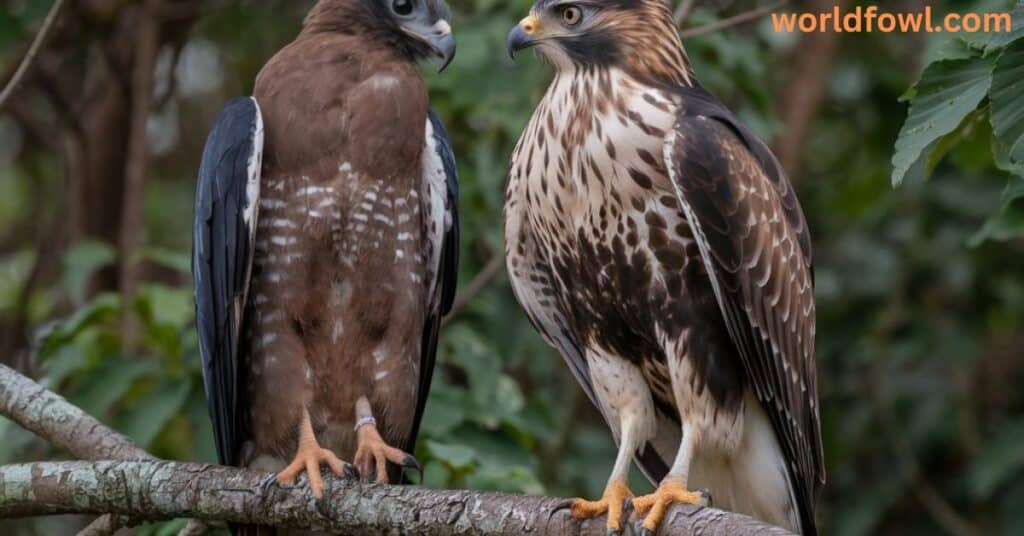
- Aggression: Hawks are generally more aggressive than buzzards, especially in defense of their nests. While buzzards may engage in defensive swoops, hawks are known for dive-bombing intruders and can be more territorial.
- Behavior: Buzzards tend to prefer soaring and scavenging, while hawks are more active in hunting small mammals and birds. Hawks are also known to be more vocal and aggressive when it comes to protecting their young.
Buzzards vs. Eagles

- Territorial Defense: Eagles, being larger and more powerful, are more likely to attack intruders, especially when protecting their territory or young. Eagles’ aggressive tendencies are more pronounced compared to buzzards, which are less likely to engage in full-scale attacks on humans.
- Size and Strength: Eagles are far larger than buzzards, and their ability to defend their nests is more formidable. While buzzards may swoop defensively, eagles can physically overpower threats.
Buzzards vs. Owls
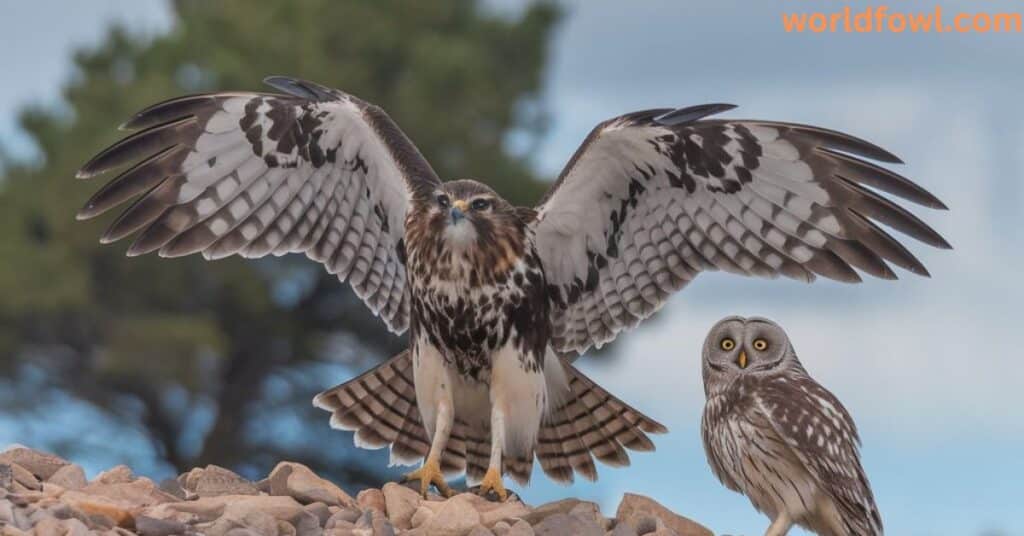
- Nocturnal vs. Diurnal: Owls are nocturnal birds of prey and typically avoid interaction with humans. Buzzards, on the other hand, are diurnal and more likely to be seen during the day. Owls also engage in silent flight, making them less noticeable than the more conspicuous buzzards.
- Defense Mechanisms: Owls tend to use their silent flight to escape danger, while buzzards are more likely to use vocalizations and defensive swooping if threatened.
See Also : Spiritual Meanings Of A Dog Running Away
What to Do if You Encounter a Buzzard
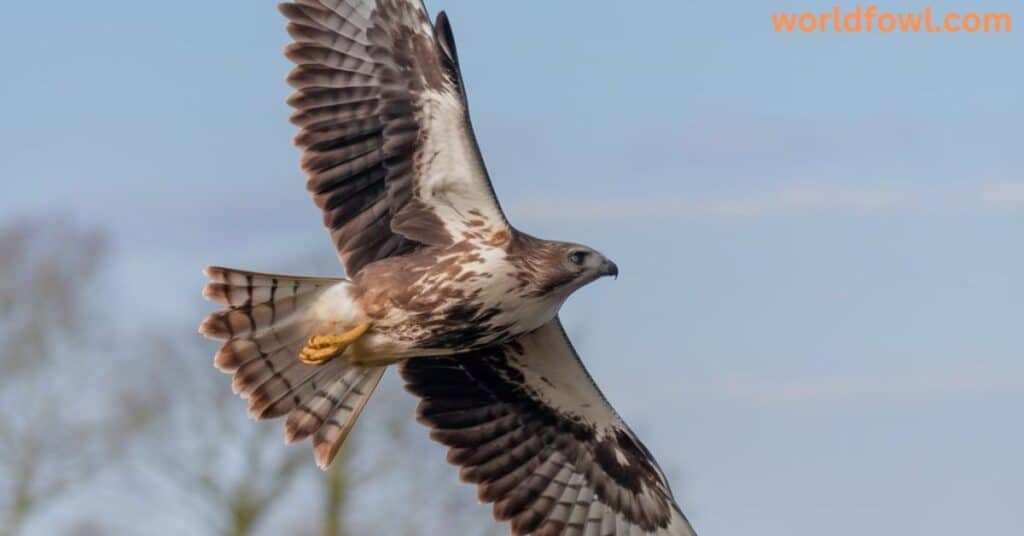
While buzzard attacks on humans are rare, it’s still important to know what to do if you ever find yourself in a situation where a buzzard may feel threatened. Here’s how to handle an encounter safely:
Stay Calm and Avoid Panic
Buzzards are more likely to avoid humans than to attack them. If you see a buzzard, remain calm and try not to startle the bird.
Keep Your Distance
Do not approach a buzzard, especially if it’s near a nesting site. If you spot a buzzard in the wild, maintain a respectful distance. Avoid disturbing the bird or its territory.
Back Away Slowly
If the buzzard shows signs of defensive behavior, such as swooping or circling, slowly back away from the area. Don’t run, as this could provoke the bird further.
Protect Your Head
If a buzzard begins swooping at you, cover your head with your arms or any available object, like a backpack or jacket. Talons can cause injury, but this is extremely rare.
Misconceptions About Buzzards
Many myths and misconceptions about buzzards have contributed to the fear surrounding them. Let’s address some of the most common ones.
Myth 1: Buzzards Will Attack Anyone Who Comes Near
False. Buzzards are naturally shy and avoid human interaction. Aggressive behavior typically occurs only when they feel their territory or young are threatened.
Myth 2: Buzzards Are Always Hunting for Humans
False. Buzzards hunt small mammals, birds, and carrion. They are not predatory toward humans and do not actively seek us out as prey.
Myth 3: Buzzards Are Disease-Carrying Birds
False. While buzzards may carry pathogens from scavenging dead animals, the risk of disease transmission to humans is minimal, especially if proper hygiene is maintained.
Final Verdict: Do Buzzards Attack Humans?
In conclusion, buzzards attacking humans is extremely rare and typically only happens in defensive situations, particularly when protecting their nests during the breeding season. These birds are not dangerous to people unless provoked or threatened. Most encounters with buzzards are peaceful, and the birds are more likely to soar away than to engage in aggression.
Coexisting with Buzzards
Buzzards are an important part of the ecosystem, playing a vital role in controlling populations of small mammals and scavenging for dead animals. By respecting their space and understanding their behavior, humans and buzzards can coexist peacefully. Whether you encounter a buzzard in the wild, in an urban park, or near its nesting site, remember that these magnificent creatures are more interested in feeding, soaring, and caring for their young than in attacking humans.
See Also : Why Do Hawks Screech? The Surprising Truth
FAQs: Do Buzzards Attack Humans?
Are Buzzards Dangerous to Pets?
Buzzards may target small pets if they feel their territory is threatened, but such incidents are rare. Protect small animals by keeping them indoors or under supervision when buzzards are nearby.
What Should I Do if I See a Buzzard in My Yard?
Observe the buzzard from a safe distance. If it is circling or hovering near your property, it may be looking for food or protecting its nesting area. Avoid disturbing the bird and make sure your pets are safe.
How Can I Tell if a Buzzard Is Agitated or Defensive?
Look for signs like aggressive vocalizations, swooping, or circling. These are signs that the buzzard may feel threatened and is trying to protect its nest or territory.
Conclusion: Do Buzzards Attack Humans ?
Buzzards are fascinating creatures that play an important role in the ecosystem. While they may have a predatory appearance, they are generally peaceful birds that will only resort to aggressive behavior if they feel threatened. By respecting their territory and understanding their defensive instincts, we can safely coexist with these incredible birds of prey. So, the next time you spot a buzzard soaring high, remember, they’re more interested in scavenging than in attacking humans. { Do Buzzards Attack Humans }

Henry James is a seasoned blogger and a passionate storyteller on “World Fowl.” With years of experience crafting engaging content, he brings a unique blend of expertise and creativity to his writing. Henry specializes in exploring diverse topics with depth and clarity, captivating readers worldwide.

